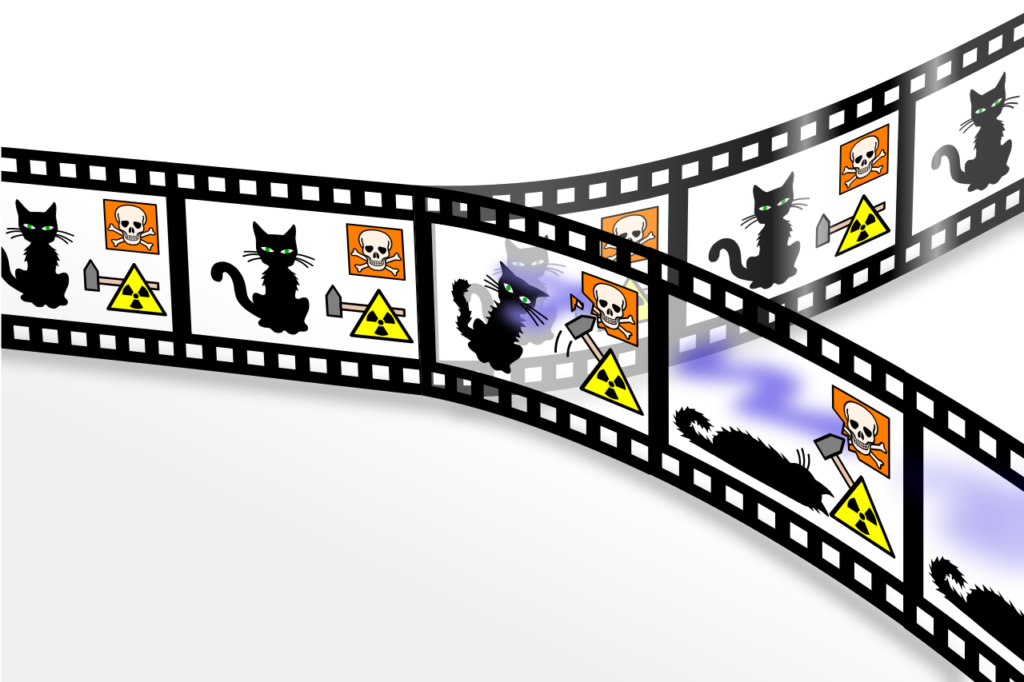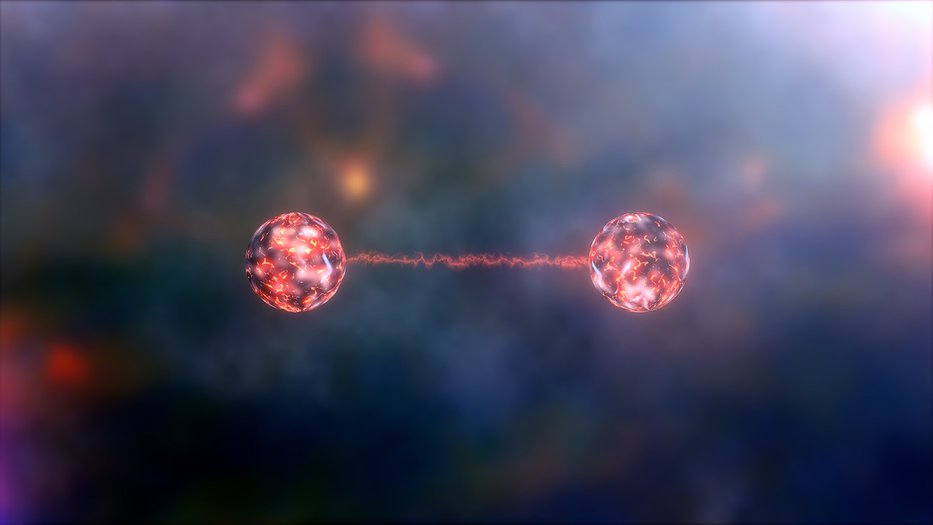Quantum technologies exploit the concepts of superposition and entanglement, as well as the control of individual quantum objects, to secure communications, develop ultra-sensitive sensors and revolutionize computing and digital simulation.
Quantum superposition

© Christian Schirm
The world is such that an object can exist in several distinct states. An object is said to be in a quantum superposition of states when it is in several of these states simultaneously. But superimposed states are fragile and quickly disappear at our scale.
Is the cat alive AND dead?
E. Schrödinger devised a thought experiment to demonstrate the paradoxical nature of quantum physics as applied to our scale: a cat is enclosed in a box with a radioactive atom, whose disintegration triggers the emission of a deadly gas into the box. If the atom is both undecayed AND decayed, then the cat is both alive AND dead! Yet when we open the box, we still observe the cat alive OR dead.
Quantum entanglement

© shutterstock.photo
Quantum physics allows two or more objects to exist in very special superposition states called entangled states. While a measurement of one of the entangled objects yields a completely random result
determined by the measurement itself, this measurement also instantaneously determines the state of the other objects, regardless of the distance between them.
Albert Einstein rejected the concept of quantum entanglement, calling it “phantom action at a distance”.
Entanglement is a resource for storing, transferring and processing information.
Bell’s inequality
J. Bell realized that there were experiments (measuring Bell inequalities) to verify whether the world was really described by quantum physics alone, or whether entanglement could in fact be described by classical hidden variables attached to entangled objects. These experiments showed that such local hidden variables cannot exist.

© Johan Jarnestad/The Royal Swedish Academy of Sciences
Violation of Bell’s inequality
A. Aspect and his team used pairs of entangled photons produced by a bright source. The two photons in a pair were separated and then measured “by surprise”, without them being able to communicate to each other how they were being measured. They gave results that were both totally random, but exactly opposite to each other, without having embedded any hidden information when they were separated.
Nobel Prize of Physics, 2022
The 2022 Nobel Prize in Physics is awarded to 3 physicists who have demonstrated the bizarre phenomenon of quantum entanglement, paving the way for quantum information processing: Alain Aspect, John Clauser and Anton Zeilinger.
Nobel Prize of Physics, 2025
The 2025 Nobel Prize has been awarded to three physicists, including Frenchman Michel Devoret, for their discovery of the macroscopic quantum tunneling effect and the quantization of energy in an electrical circuit. The other two winners are John Clarke and John Martinis.

